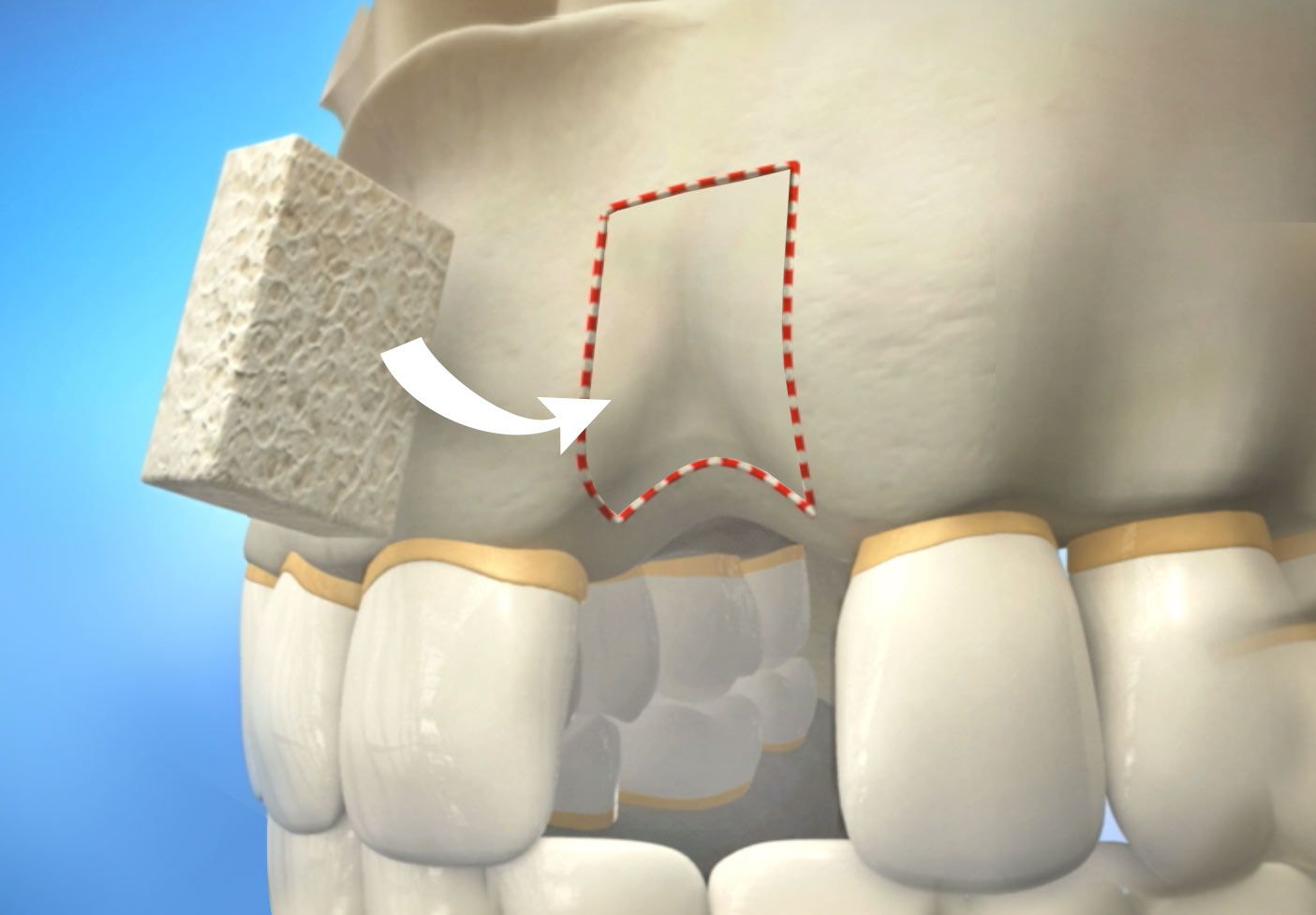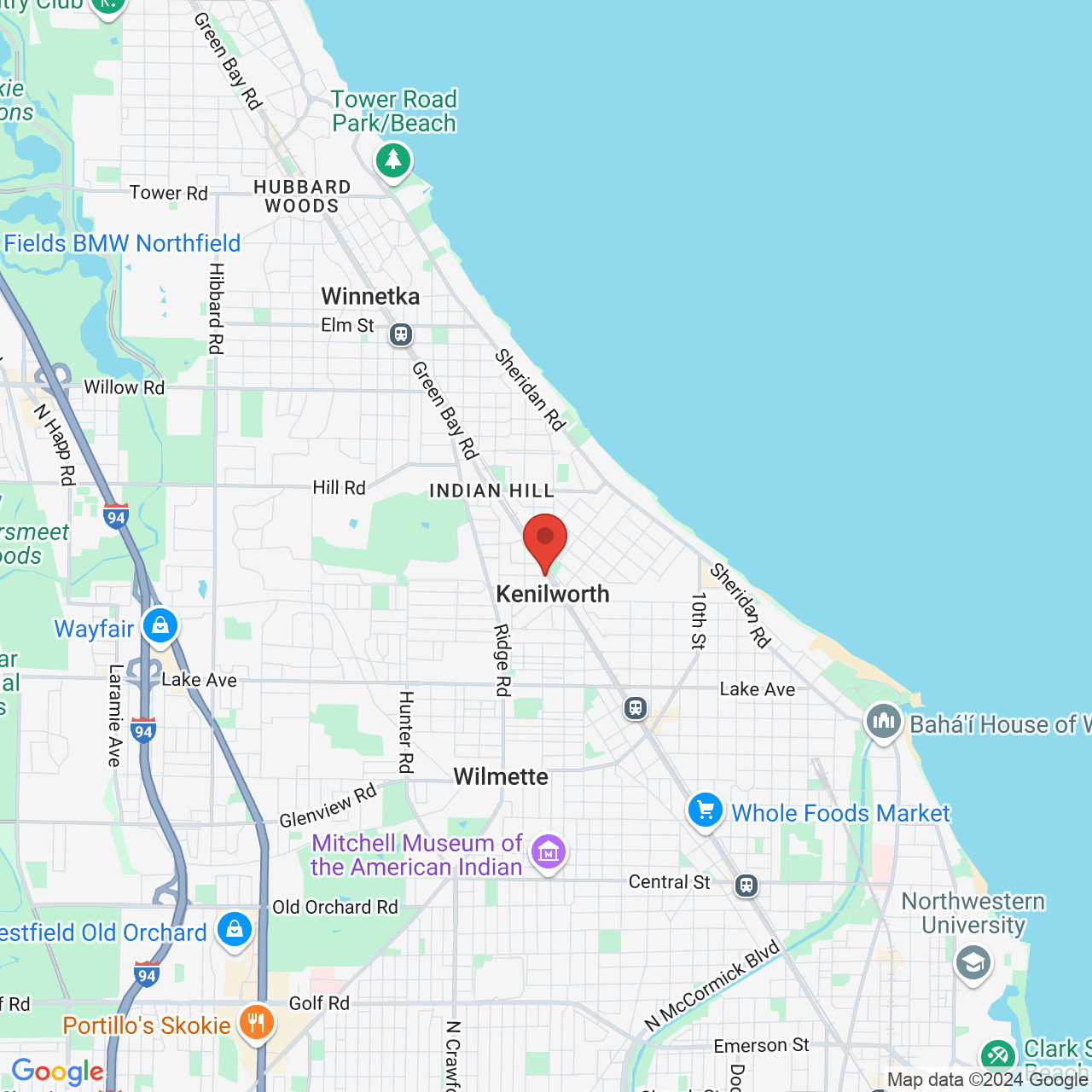Restore Your Candidacy for Dental Implants with Bone Grafting
Following tooth loss, bone tissue in the jaw will begin to recede, eventually affecting dental implant candidacy. At our Kenilworth, IL, dental practice serving Evanston and Glenview, Dr. Art Carpenter offers bone grafting to restore lost bone tissue in your jaw and create a strong foundation for dental implants.

Do I Need a Bone Graft?
Because dental implants rely on the jawbone for support, the jaw must have enough tissue to allow the implant to withstand chewing and other functions. If you have waited to address a lost tooth and have experienced bone atrophy, you may require a bone graft. During your initial consultation, Dr. Carpenter can assess the health and strength of your jaw using computed tomography (CT) scans and other advanced technology. He can then determine whether you require preparatory procedures for a successful implant surgery.
Benefits of Bone Grafting
Bone grafting allows Dr. Carpenter to restore your candidacy for dental implants. The procedure restores jawbone density by placing donor tissue or grafting material in recessed areas.
Following a successful bone grafting procedure, dental implants have a success rate of up to 97 percent. Patients who undergo a bone graft at our dental practice can benefit from:
- A safe procedure that has a low risk for complications
- Restored candidacy for dental implants
- Greatly lowered risk of dental implant failure
- Restored oral health
- The reversal of jawbone atrophy
- A restored jawbone

Types of Bone Grafts
During a bone graft procedure, bone tissue is either harvested from another part of the body or from a donor source. Depending on your needs, we can also incorporate synthetic material. After inserting the bone tissue into the recessed area, it begins to integrate with the jawbone and promote bone regrowth. There are three main types of dental bone grafts:
- Alveolar Ridge Preservation Graft: Also known as a socket graft, this procedure is used to fill the void resulting from a tooth extraction. A ridge graft is inserted directly into the empty socket and typically requires three to six months of healing before implant placement.
- Autogenous Ramus/Chin Graft: This type of graft is also called a block bone graft because it involves harvesting a block of bone tissue, about one centimeter squared, from one area of the patient's jaw and transferring it to the recessed area. The block is usually obtained from the lower jaw or from the chin. Patients typically need about four months for the graft to fuse before placing an implant.
- Subantral Graft (Sinus Lift): When teeth are lost in the upper jaw, there is a chance that the maxillary sinus will expand to fill any resulting empty space. In other cases, a patient's sinuses may naturally lay too close to the implant site. In either instance, a sinus lift procedure is required to make it possible for a dental implant to fit safely within the jaw and avoid disrupting the soft tissues of the sinuses. Sinus lifts typically require a period of four to nine months to heal before implant placement.
Before treatment, our team can review your options and recommend the most appropriate type of graft for your needs.
After inserting the bone tissue into the recessed area, it begins to integrate with the jawbone and promote bone regrowth.
Am I a Candidate?
Candidates for bone grafting want to experience the many benefits of dental implants, but have insufficient bone tissue in the upper or lower jaw. Dr. Carpenter has undergone extensive training in order to learn how to restore strength and aesthetics to the smiles of his dental patients.
Candidates for bone grafting often suffer from:
- Missing teeth
- Jaw trauma
- Congenital defects
Risk factors for jawbone atrophy include:
- Missing one or more teeth for a long period of time
- Advanced gum disease
- Tobacco use
- Advanced age
Once you have undergone bone grafting at our Kenilworth dental practice serving Evanston and Glenview, you can become a candidate for dental implant surgery. Candidates for this oral surgery should be in good overall health and free of any conditions that could complicate surgery, such as uncontrolled diabetes.
A Look at the Procedure
Before your procedure begins, Dr. Carpenter will use local anesthesia to numb the treatment site. He can also provide sedation to ensure that you are relaxed and comfortable throughout your procedure. Once you are comfortable, Dr. Carpenter will make an incision in your gums to access your jawbone. Next, the graft will be placed where the jawbone has atrophied.
A biocompatible membrane, often made of collagen, may be used to hold the graft in place as you heal. Once your surgery is complete, any incisions will be sutured closed. Full recovery can several months, depending on the type of bone graft you receive. Once your jawbone has completely healed, Dr. Carpenter will schedule your dental implant surgery.
As with any surgery, there are minor risks of complications. Your dentist's experience and reputation can be an excellent indicator of how likely you are to experience the results you want. Dr. Carpenter has been helping patients throughout the area improve their smiles since 1998.
Book a Consultation Today
Before undergoing implant surgery, it is important to have a strong, healthy jawbone. For your convenience, our doctors can perform all stages of implant treatment in-house, including any necessary bone grafting. Our caring dentists are here to take care of every phase of your smile restoration, from your candidacy assessment through your recovery.
The loss of jawbone tissue does not mean that you will not be able to enjoy the life-changing benefits of dental implants. Once your jawbone has healed following the placement of a bone graft, we can begin rebuilding your smile with dental implants. To schedule your dental implants consultation, please contact our office online or call (847) 251-5004.






